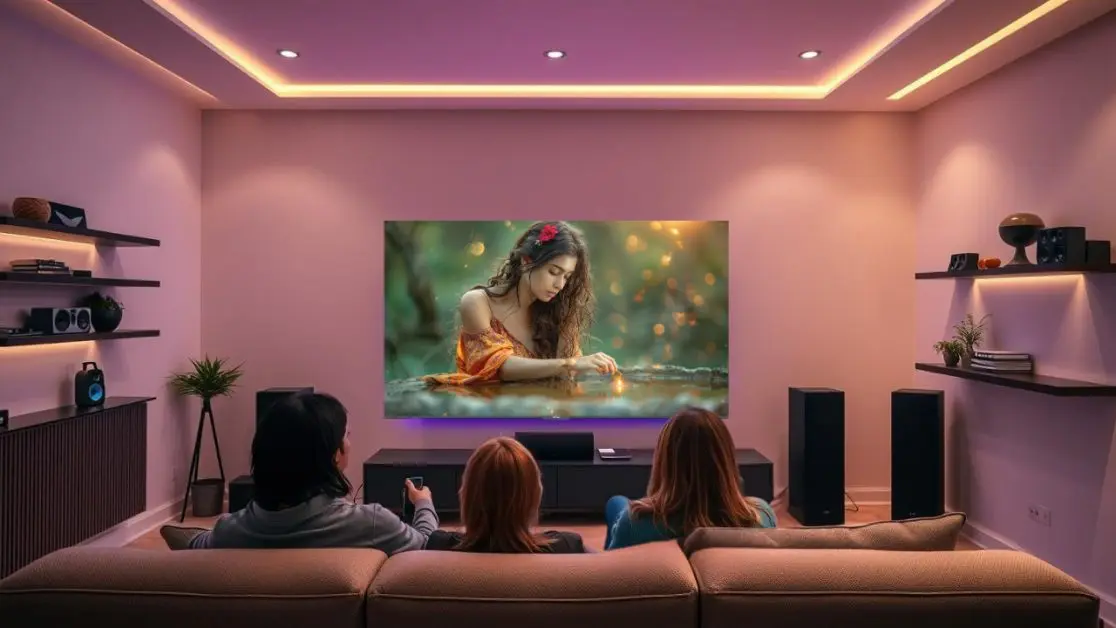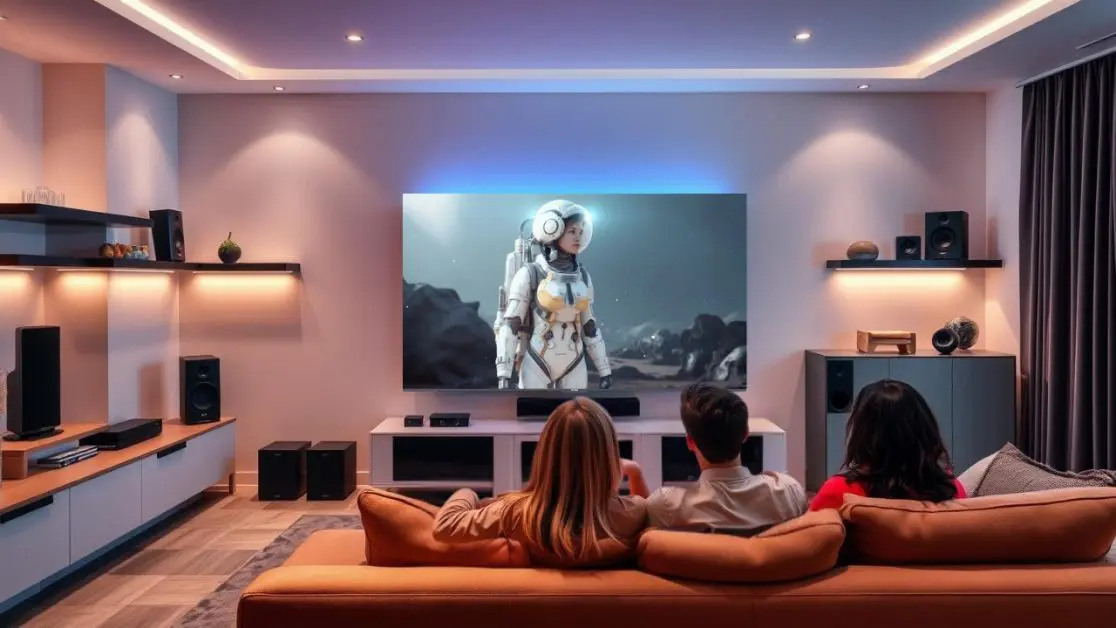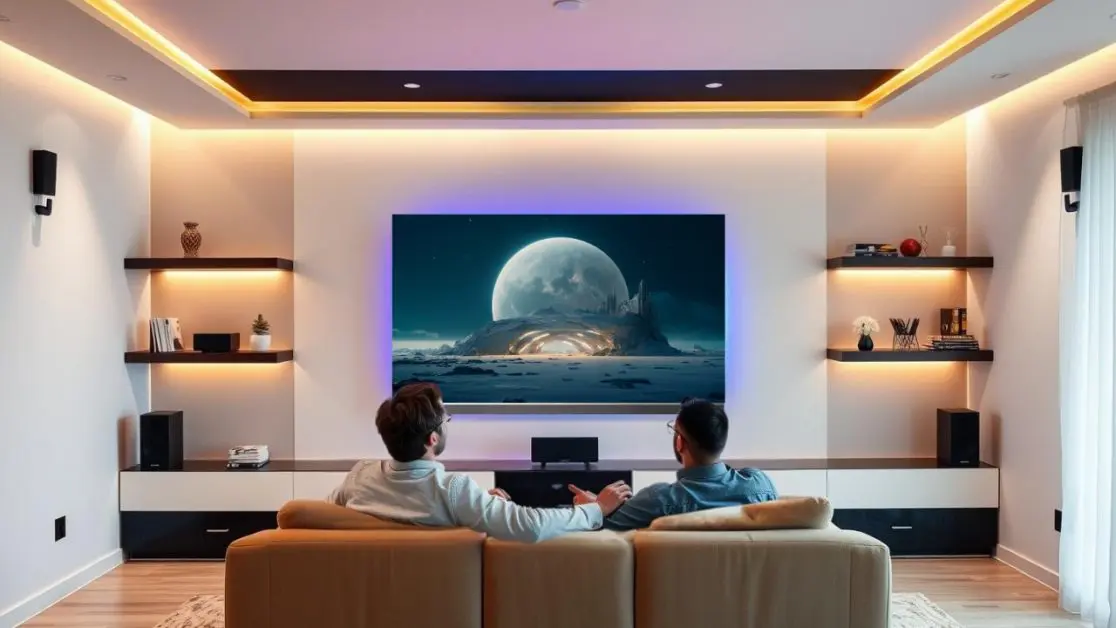Do you ever find yourself scrolling through options more than watching them?
With the vast content libraries offered nowadays, it’s easy to feel baffled about what to choose. Searching through apps, shows, or even movies can be a time-consuming task as well.
The television industry is trying to put out smarter models for people, but these people are still unable to find what they desire quickly.
But don’t worry; Google-based recommendation technology can help solve this problem.
With Google-powered TVs, you don’t just get a single suggestion, you get a carefully curated list of shows and movies. With learning, observation, and adaptation, Google technology figures out the user’s viewing trends.
Suggestions average and adapt over time, optimizing along the way, much like having a custom curator for each viewer, understanding their preferences on a Monday versus a Sunday.
The advanced features are designed with more than just streaming to further enhance the overall experience.
Consider Haier Mini LED TV, which pairs unparalleled picture and sound technology along with powerful Google-based recommendation technology and sophisticated other tech to completely change how users interact with their TVs.
If you’re planning to enjoy the rest of the content without straining your mind, this article will explain more than thoroughly what you need to know.
Let’s take a look at how Google-based personalization is transforming the way we consume content, as well as how Dolby Vision IQ, MEMC 144Hz, and Google TV are revolutionizing home entertainment.
What Are Google-Based TV Recommendations Exactly?

Google-based recommendations go a step beyond basic filters and simple algorithms. They are smart televisions that understand user preferences based on several pieces of data such as:
- Watch history
- Genre exploration frequency
- Morning versus evening viewing
- Completion and drop-off rates of shows
- Interactions such as likes, ratings, or skips
Using the aforementioned interactions, the Google engine adjusts its suggestions. Over time, it learns what one might desire to watch before even deciding.
This level of personalization is unparalleled, especially when integrated with new smart TVs and Google TV, transforming the main dashboard into a smart assistant which brings recommendations across YouTube, Netflix, and more in a single hub.
In What Way Personalization Improves Experiences Further

The use of technology has made changes to how individuals engage with various media. It presents great benefits, including:
1. Cuts Energy Expenditure and Time
Audiences no longer have to scroll endlessly. Instead, they are provided with a list of titles they’re most likely to enjoy to get straight down to business. In the long run, this alleviates decision fatigue because most of the time can now be spent watching.
2. A Great Unexpected Find
The benefits of Google recommendations also go far beyond these. It is also capable of surfacing lesser-known titles concerning very specific interests—such as quiet documentaries, niche indie films, or underrated gems.
3. Adapts with Device Sharing
Older individuals aren’t inundated with animated shows, and kids don’t have to put up with adult cartoon series. Smart television sets can now distinguish between various users with recommendations tailored to each profile. This has become increasingly important to many households that have multiple users.
As earlier stated, personalized recommendations do little to enrich experiences on their own without great picture clarity and depth of audio alongside intuitive menus. It is important to point out how Haier’s Mini LED TV integrates with the rest of the tech ecosystem it supports.
Google TV: How Google-Based Personalization Works
This interface represents the Google TV experience the most since it manages suggestions on a personalized basis using behavioral data. Google TV aggregates best offers across platforms and provides curated content, including on-demand content, as per user needs.
For example, whether it is sports highlights or a drama and comedy special, the system automatically prioritizes content based on user preferences and past viewing habits. For families, different profiles make sure that every user receives a content feed that is relevant to them.
Dolby Vision IQ + Dolby Atmos: Adaptive Visuals and Immersive Sound
Google-based technology doesn’t only provide suggestions—it goes as far as enhancing the experience itself.
The Dolby Vision IQ dynamically tailors screen brightness and contrast to the room’s light conditions. At night, visuals are fine-tuned to eliminate glare while improving contrast; during bright daylight, the screen adjusts to maintain clarity and detail.
This is matched by Bose Dolby surround where sound is projected from around the viewer and even above the viewer, replicating a theatre-quality experience right in the living room.
MEMC 144Hz: Great for Everything Fast-Paced

MEMC stands for Motion Estimation, Motion Compensation. Fast-paced sports, gaming, and action scenes benefit from a smooth 144Hz refresh rate.
Reduced blurring makes it easier to follow the action clearly, which works in tandem with Google-curated recommendations when a viewer usually selects fast-paced content.
Harman Kardon + dbx-tv: Personal Audio Experiences
Quality sound completes the sensory experience. Harman Kardon speakers provide premium acoustics, while dbx-tv technology ensures dialogues are clear and background music doesn’t overpower speech—making every movie or show immersive.
Smart Control, Smarter Living
Google-powered televisions go beyond viewing, engaging with users in a more interactive manner.
Hands-Free Voice Control
Navigation becomes intuitive with voice commands. Whether accessing YouTube, news channels, or streaming apps, users can simply speak.
Smart home integrations also allow adjustments to lighting, temperature, and security—all via the TV.
Pro-Level Responsiveness for Gamers
For gaming fans, personalization goes beyond recommendations—performance matters.
Game Mode with VRR & ALLM
VRR technology syncs the game’s frame rate with the TV’s refresh rate to eliminate tearing or stuttering.
ALLM (Auto Low Latency Mode) detects gaming instantly and shifts to optimal settings automatically.
This ensures gamers experience snappier controls, smoother graphics, and faster response times, ideal for competitive gaming.
Of Course, Storage and Speed Are Also Important

Lag ruins smart TV experiences. The Haier Mini LED TV solves this with:
3GB RAM + 32GB ROM
- 3GB RAM ensures lag-free multitasking, seamless app switching, and fluid voice command responses.
- 32GB ROM gives ample room to store apps and content, ensuring your system stays fast and responsive.
Combining Google-based algorithms that react and process in real-time, this hardware ensures instant personalization.
It Isn’t Only About Technology, It’s the Personal Side
The shift to Google-based personalization ensures you won’t get bored with repetitive recommendations or set schedules.
For true potential, both hardware and software must work in perfect sync.
Smarter Choices, Better Experiences!
Content overload is a real challenge today, but it’s manageable. Google-driven suggestions make selection easier, satisfaction higher, and content more relevant.
When combined with innovations like Dolby Vision IQ, MEMC 144Hz, and premium sound systems, the TV evolves into a deeply personal entertainment hub.
An excellent example of this is Haier’s Mini LED TV, showing how smart features and technology elevate every moment from passive watching to fully immersive experiences.
Whether you’re curling up for a mid-week movie or setting records in weekend gaming marathons, Haier India ensures entertainment is more intuitive, more personalized, and more enjoyable.
Discover the newest frontiers in tailored viewing experiences by visiting Haier India Home Appliances website. Redefining effortless living begins with effortless entertainment.

